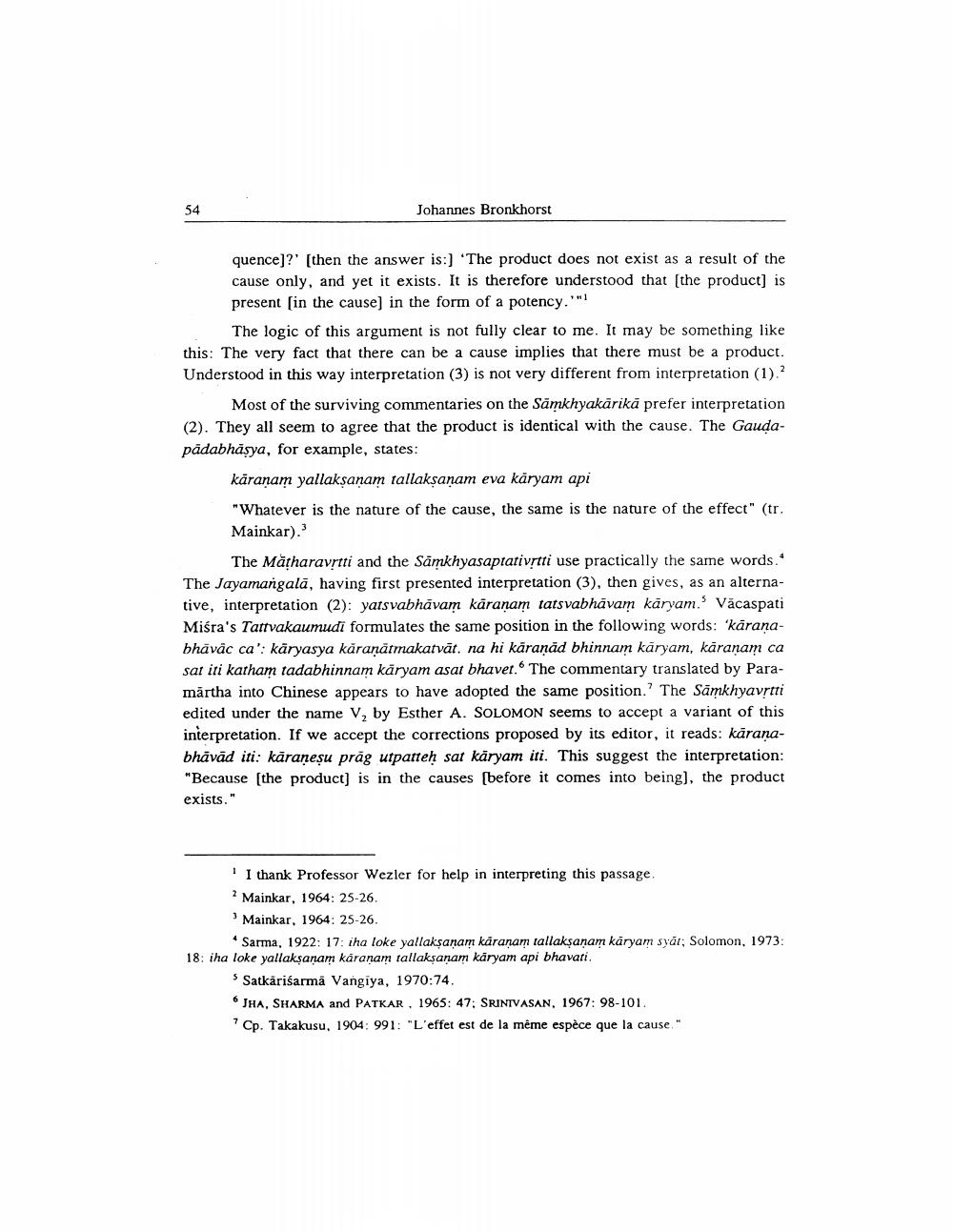________________
Johannes Bronkhorst
quence]?' (then the answer is:) 'The product does not exist as a result of the cause only, and yet it exists. It is therefore understood that the product] is present in the cause) in the form of a potency.""!
The logic of this argument is not fully clear to me. It may be something like this: The very fact that there can be a cause implies that there must be a product. Understood in this way interpretation (3) is not very different from interpretation (1).?
Most of the surviving commentaries on the Samkhyakārikā prefer interpretation (2). They all seem to agree that the product is identical with the cause. The Gaudapadabhäsya, for example, states:
karanam yallaksanam tallaksanam eva karyam api "Whatever is the nature of the cause, the same is the nature of the effect" (tr, Mainkar).
The Matharavrtti and the Samkhyasaptativtti use practically the same words. The Jayamangala, having first presented interpretation (3), then gives, as an alternative, interpretation (2): yatsvabhāvam kāraṇam tatsvabhāvam kāryam. Vācaspati Miśra's Tattvakaumudi formulates the same position in the following words: 'karanabhāvāc ca': käryasya kāraṇātmakatvāt. na hi karaņād bhinnam kāryam, karanam ca sa iti karham tadabhinnam karyam asat bhavet. The commentary translated by Paramärtha into Chinese appears to have adopted the same position. The Samkhyavrtti edited under the name V, by Esther A. SOLOMON seems to accept a variant of this interpretation. If we accept the corrections proposed by its editor, it reads: karanabhāvād iti: kāraṇeșu präg utpatteḥ sat karyam iti. This suggest the interpretation: "Because the product) is in the causes [before it comes into being), the product exists."
"I thank Professor Wezler for help in interpreting this passage. ? Mainkar, 1964: 25-26. Mainkar, 1964: 25-26
Sarma, 1922: 17: iha loke yallaksanam karanam tallaksanam karyam syar; Solomon, 1973: 18: iha loke yallaksanam karanam tallaksanam karyam api bhavari
Satkariśarma Vangiya, 1970:74. JHA, SHARMA and PATKAR, 1965: 47: SRINIVASAN, 1967: 98-101. Cp. Takakusu, 1904: 991: "L'effet est de la même espèce que la cause."




